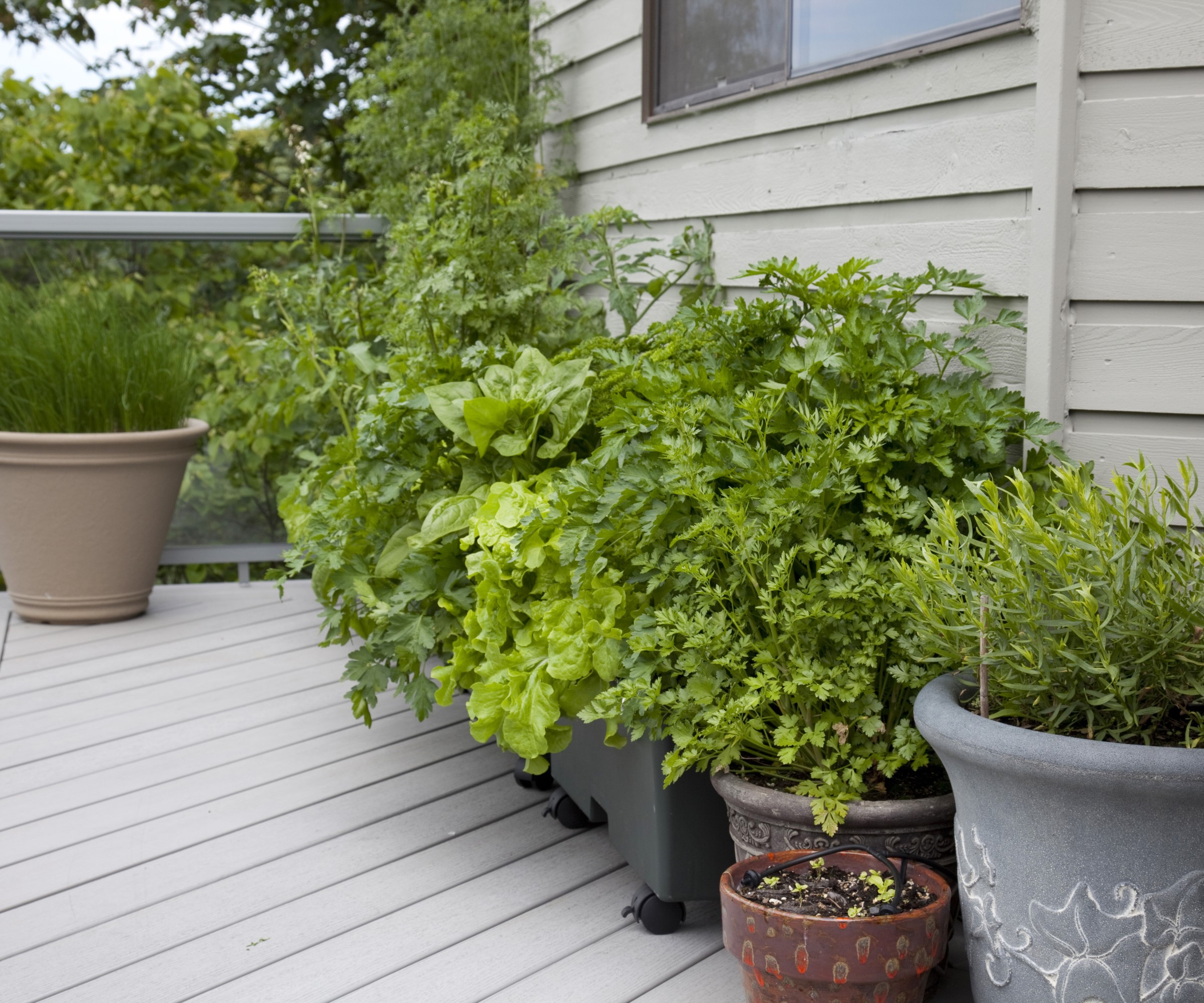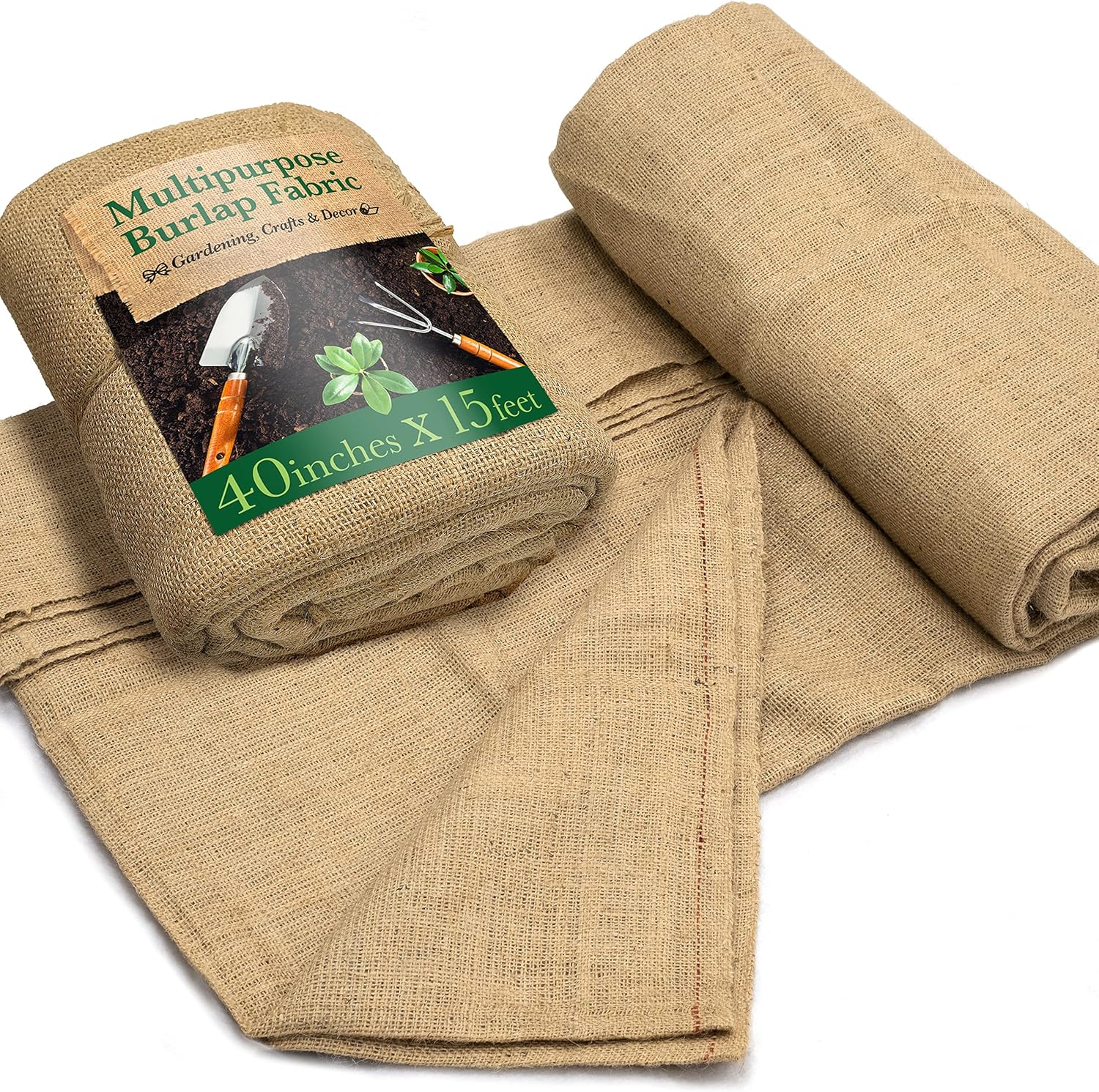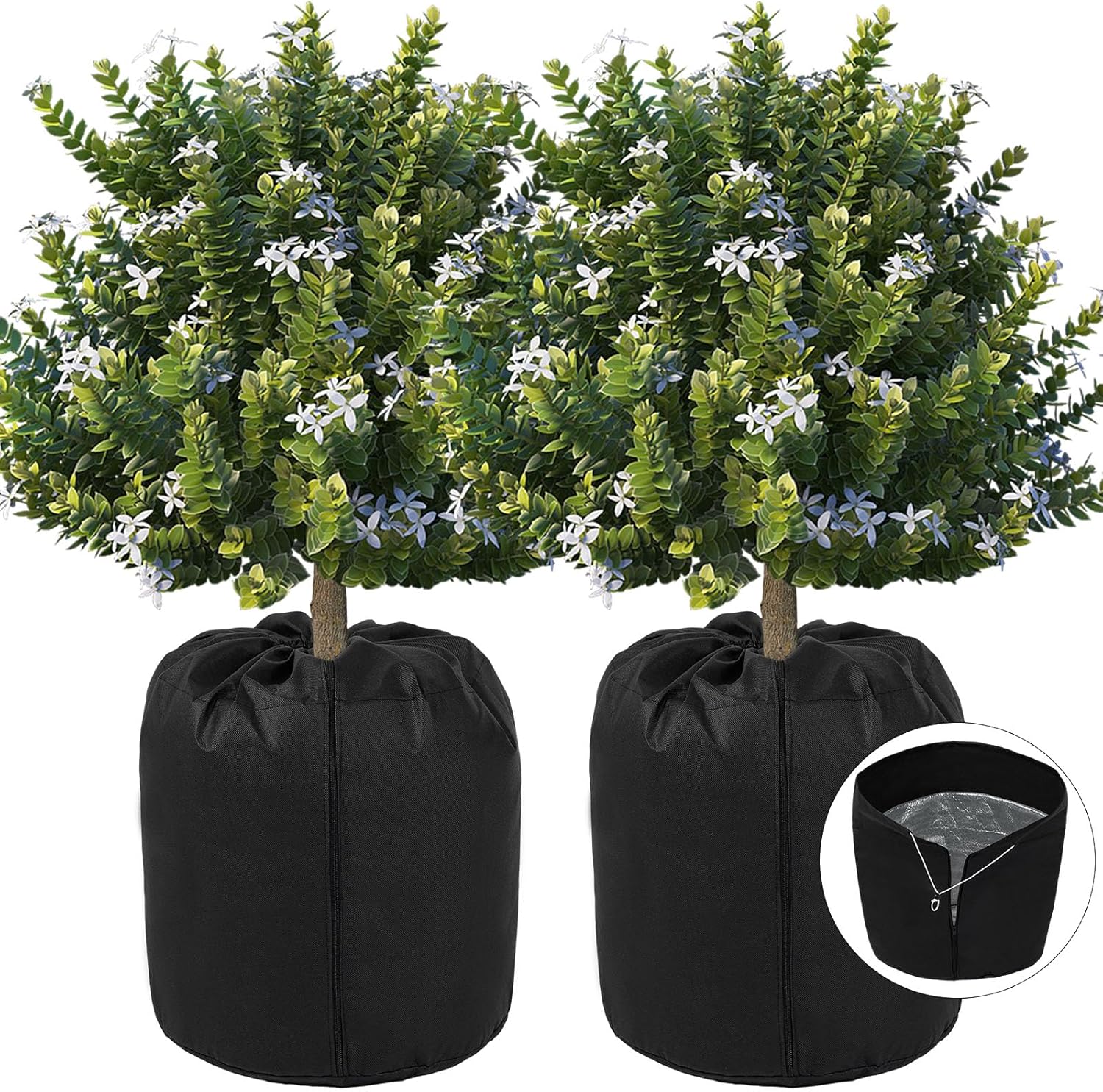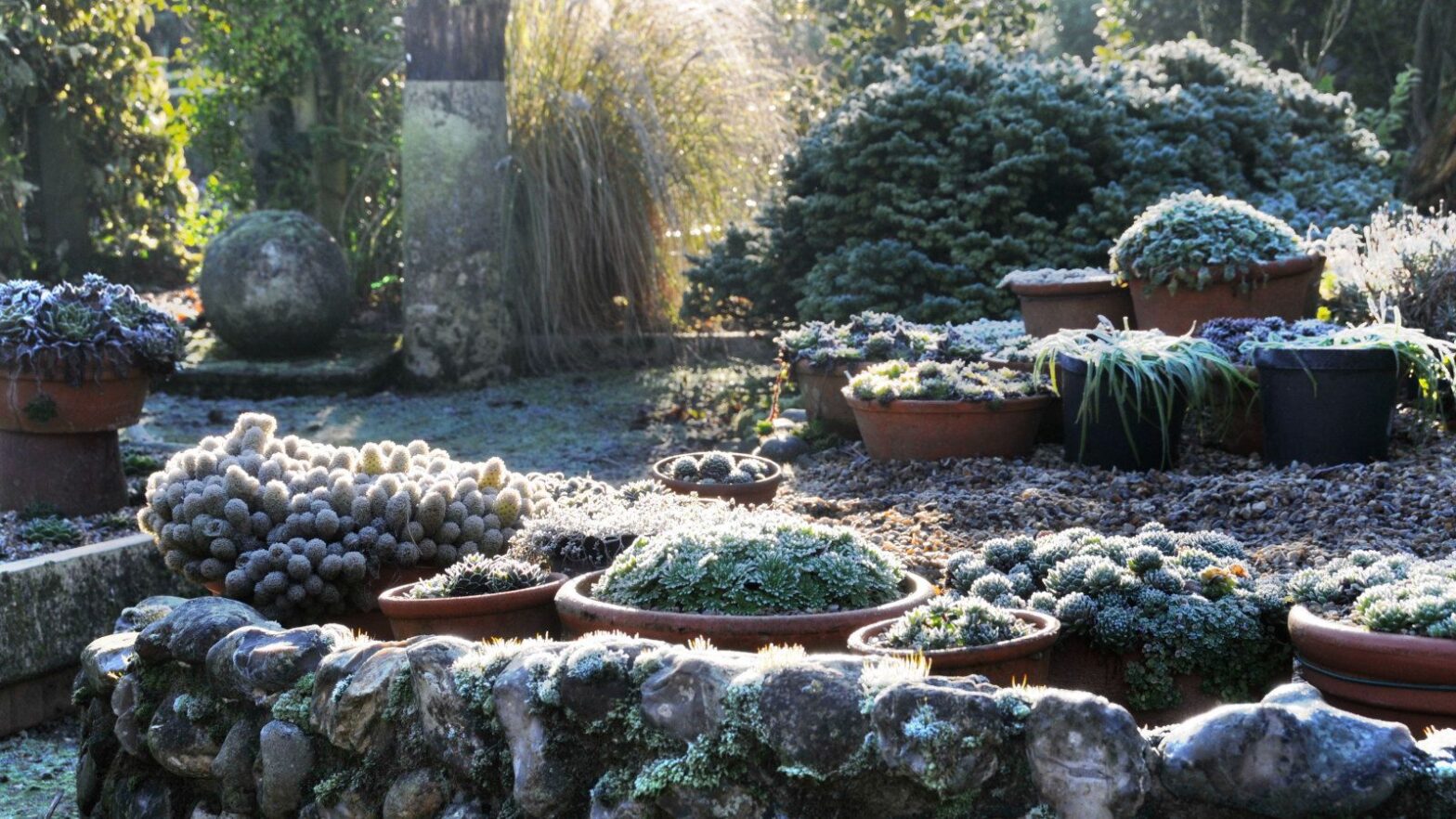Frost is every gardener's nightmare, especially if you have a lot of plants in containers. But did you know that one of the easiest ways to protect plants is to put pots together for the winter?
The theory behind it is simple. Placing the pots close together creates a natural microclimate that retains heat and protects the plant's delicate roots. Keep this collected collection of plants in a protected location to significantly reduce the risk of losing them to frost.

(Image credit: Getty/Catherine Falls Commercial)
Experts recommend gardeners put together pots for the winter—and here's why
Be prepared and plan your fall gardening checklist well in advance. Keep an eye on local weather forecasts and plan which plants need to be moved where in your container garden.
Good planning means that any plants you overwinter indoors are tucked away before frost sets in, and potted plants that are left outdoors are protected from the winter weather in a timely manner.
It should be quick and easy to put together pots for the winter. So let's look at why and where to do this. As a bonus, gardening experts share their insights to help your plants survive the winter unscathed.
Why you should put pots together for the winter

(Image credit: GKSFlorapics / Alamy Stock Photo)
Plants in containers are more susceptible to frost. The general resistance of a plant is significantly reduced in a container because the roots are more exposed to frost. In a flower bed or border plant, it benefits from the warmth and insulation of the surrounding soil.
However, when planting in a container there is only a limited amount of soil and the thickness of the pot between the roots and the frost.
But don't panic, because there are many ways to protect potted plants from the winter weather. There are ways to wrap them, sink pots in the ground and mulch, but perhaps one of the easiest ways is to put the pots together for the winter.
“Grouping containers creates a shared microclimate that traps radiant heat and protects plants from wind,” says Brandon McCormick, director of landscape design and product development who specializes in planters.
“When planters are close together, the air between them becomes slightly warmer and more stable, reducing temperature fluctuations that stress plant roots.”
Grouping pots helps retain heat and shield plants, and they all benefit from a natural barrier against cold weather.
For an efficient method, place the least hardy and most vulnerable plants in the center, where they can benefit most from the insulation provided by the outer, tougher pots.

Brandon McCormick is director of landscape design and product development at Carlsbad Manufacturing Corporation, where he plays a key role in driving product innovation across the family of brands, including Stone Yard, Planters Unlimited and Hooks and Lattice. With a lifetime of experience in horticulture, Brandon brings a unique knowledge of plants to the built environment. His combined experience in landscape management, rare plant care and design collaboration makes him a trusted expert at the intersection of form, function and green innovation.
Where to put the pots for the winter?

(Image credit: Getty/Gallo Images)
They put the pots together for the winter to protect them. Therefore, choosing the right location for storage is crucial. It would be pointless to group pots in a pocket of frost or a freezing corner of the garden; You want a place that is protected from the worst winter elements.
While smaller pots can be stored in an unheated greenhouse, cold frame, porch or sunroom during the winter, larger pots can benefit from the natural warmth and protection that buildings or structures provide.
“Place the pots in a sheltered location, against a garden fence or against a house wall,” says Lydia Beaumont, gardening expert at Gardeners' Yards. “This keeps them out of the wind and benefits from residual heat, especially if it’s close to your home.”
Brandon McCormick praises the natural shelter you can take advantage of by placing pots on a south-facing wall or under an overhang or eave. He adds: “These sites radiate heat, block strong winds and protect pots from freezing rain.”
South-facing garden walls also absorb the heat of the winter sun and slowly release it again after sunset. This microclimate can be enough to protect plants from frost overnight.

Lydia Beaumont is a gardening expert for Gardeners' Yards – a trusted online resource for gardeners to grow, inspire and discover. Whether she's creating stylish table settings or transforming a garden into a personal oasis, Lydia loves making any space stunning and comfortable.
Additional expert tips

(Image credit: Future)
If you're worried that putting pots together for the winter isn't enough, are there any additional measures you can take to protect your plants? Yes, there is, and the experts have offered some additional advice to help your container plants survive the winter.
“In extremely cold regions, adding a layer of mulch around the base of the plants or wrapping the planter in breathable fabric can provide additional root protection,” advises Brandon. Breathable fabrics for wrapping potted plants for the winter include garden fleece, burlap, bubble wrap, or protective pot covers.
And Lydia adds: “Use wood or brick to raise pots off the ground; this will prevent the roots from lying in damp, cold soil all winter. An alternative to wood or brick is to use pot stands, such as these rubber pot stands on Amazon.
A final option, and an alternative to wrapping individual pots, is to pack straw or fleece between the pots when putting them together to further insulate the roots.

This burlap roll is made from natural jute fibers. It measures 40 x 15 feet and can be cut to desired size to use as a plant cover.

These winter pot covers are made of high quality fabric and aluminum foil. They feature a drawstring that makes it easy to cover pots and allows access for watering.

A floating row cover can protect outdoor plants from cold winter weather. This provides frost protection up to 28°F and can be tailored for individual plants.
If you have large, tender or hardy plants in your garden, you can wrap them with garden fleece or burlap for the winter to protect them from frost. You want them protected from the first frosts in your climate. So check out our guide to plants to pack in November to make sure you have all of these plants covered in time.
